
Ho Chi Minh City – Top travel destination in Asia
Ho Chi Minh City has won several awards over the last years, the last ones in 2023, as one of the top travel destinations in Asia in general and Vietnam in particular. I went there on my third tip to Vietnam, to fly into and to fly out of. I spend a total of one week in the city and explored as much as I could.
Ho Chi Minh City, previously called Saigon or Sài Gòn had a name change after the end of the US-Vietnam war in 1976. With Saigon having been the seat of the south Vietnamese government the US influence is very obvious here and the city is very different to other big cities in Vietnam like Hanoi and Da Nang. With its size and international influences on the city it felt more like “the”a capital” than Hanoi did.
This post contains affiliate links to things like tours and hotels. These help me earn a small commission at no additional charge to you. Every affiliate link is marked with a *.
Trigger warning for human cruelty the gallery under the “War Remnants museum” paragraph.
Overview of a trip to Ho Chi Minh City / Saigon
- Where to stay in Ho Chi Minh City
- What to do in Ho Chi Minh City
- What to eat and drink in Ho Chi Minh City
- TLDR, show me a map with everything important
Where to stay in Ho Chi Minh City
I listed several options here, from renting a room aroung 25€ per night to luxury hotels starting at 150€ per night. With each I listed to pros of the different accommodations.
Christina’s – Hotel & Café* is an affordable choice, with clean, modern rooms and lofts, with ensuite bathrooms, balconies and comfortable community spaces like a rooftop terrace, working space and a kitchen right in District 1 of HCMC. I stayed with them in Hanoi in 2019 as well and can wholeheartedly recommend them. You have your privacy as a solo traveller without breaking the bank, but can still meet people in the community areas.
Leiden Homestay & Cafe* is located as ideally as Christina’s, in the middle of everything you should see that I listed below. It is a little more expensive, but the rooms are also more spacious.
M Village Nguyễn Văn Thủ* is perfect for longer rentals as some rooms come with a kitchenette and are similar to serviced apartments.
Mai House Saigon Hotel* is the mid range choice, more expensive than renting a room, but also with the amenities of a hotel: a rooftop pool, room service, a concierge, gym and breakfast options.
For a more luxury experience choose La Siesta Premium Sai Gon* or New World Saigon Hotel*. Both are located near the center and they are on top of several lists of the best consumer voted hotels in Saigon.
What to do in Ho Chi Minh City
Even though it is not the current capital city of Vietnam Saigon has had as much of a rich history as Hanoi, maybe even a more turbulent one. Within the city and it’s surrounding areas you can find many well curated museums as well as places of historical and cultural importance.
Museum of Ho Chi Minh City
The Museum of Ho Chi Minh City is located inside the Gia Long Palace. When the impressive baroque villa was built in 1890, during the French occupation, while south Vietnam was still known as “Indochina”, to house the Museum of Commercial Trade.
During and after 1945 the palace had many different designations, from housing governmental and military headquarters of the Japanese, US and south Vietnamese to becoming the official residence of the Premier of the State of Vietnam, then later the temporary residence of the Prime Minister.
It became the “Ho Chi Minh City Revolutionary Museum” after the country was unified in 1978 and renamed to its current name in 1999.
Parts of the former palace and museum are in disrepair, but I hope with Vietnam and Ho Chi Ming City becoming one of the top travel destinations in Asia they will recieve the funding to improve on it in the future.
History Museum of Ho Chi Minh City
The History Museum of Ho Chi Minh City doesn’t only cover the history of the city (as the museum mentioned above does), but rather of the country and neighbouring cultures, from the prehistoric period to the Nguyễn dynasty that ended in 1945.
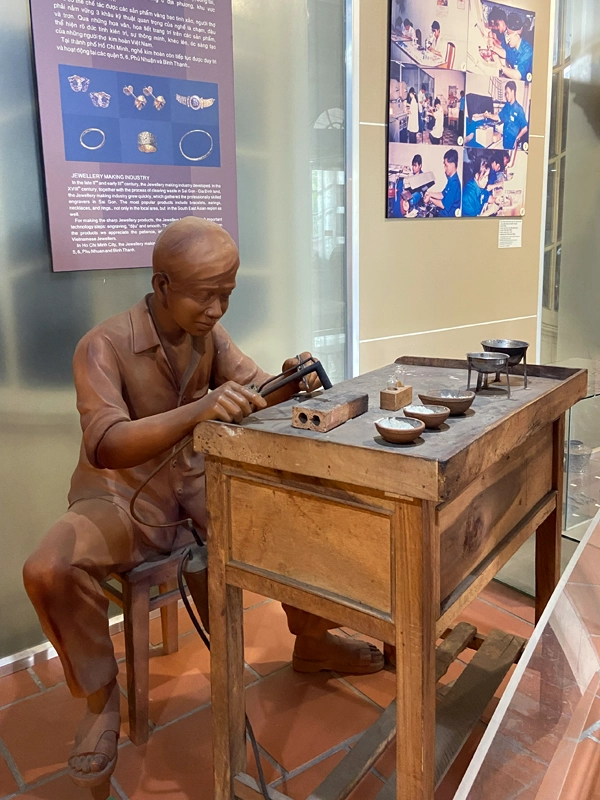
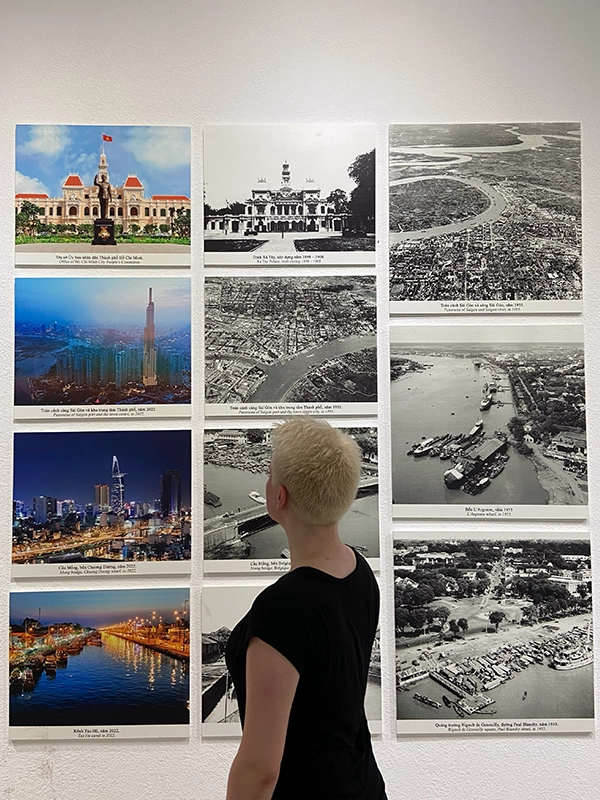
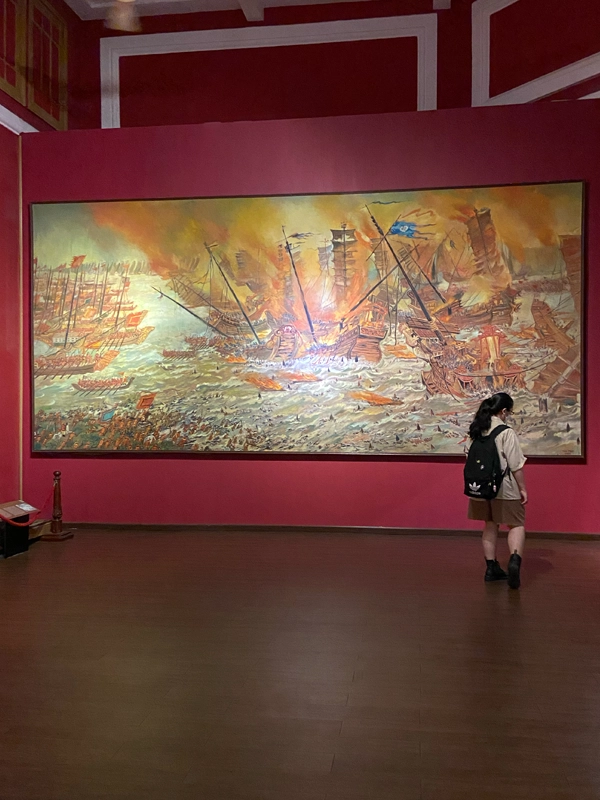
Independence Palace
The site has seen French occupation (twice), Japanese occupation, the “Republic of Vietnam”, a coup d’état and not one but two wars that were decided right on its doorstep. If only walls could talk…
The building you can visit today was built in in 1962 to replace the old palace, which had been destroyed by dissident nationalist south Vietnamese fighter pilots. It was once the home and workplace of the president of the Republic of Vietnam until the end of the Vietnam war. Today you can visit it as a museum and learn about the life and politics of the time between 1868 and 1975.
In 1975 after the end of the US-Vietnam war it was renamed to Reunification Convention Hall. Today both names are used frequently.
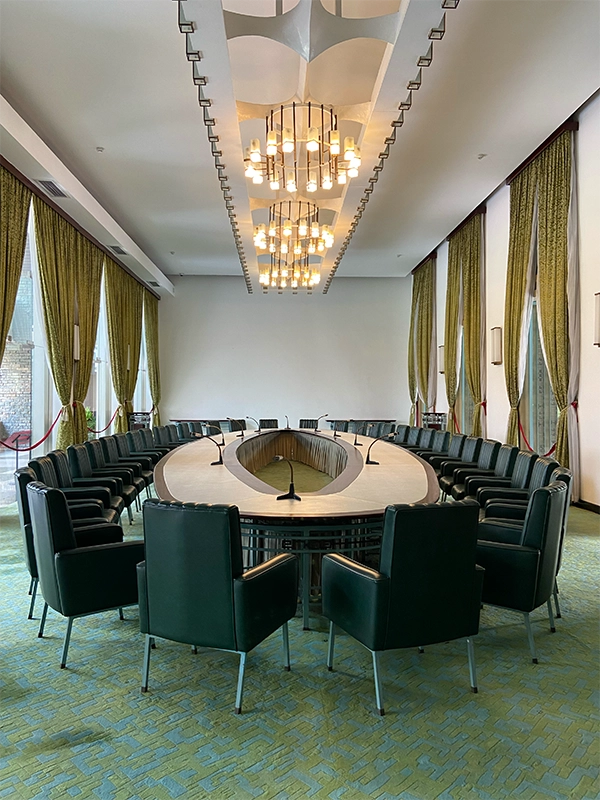
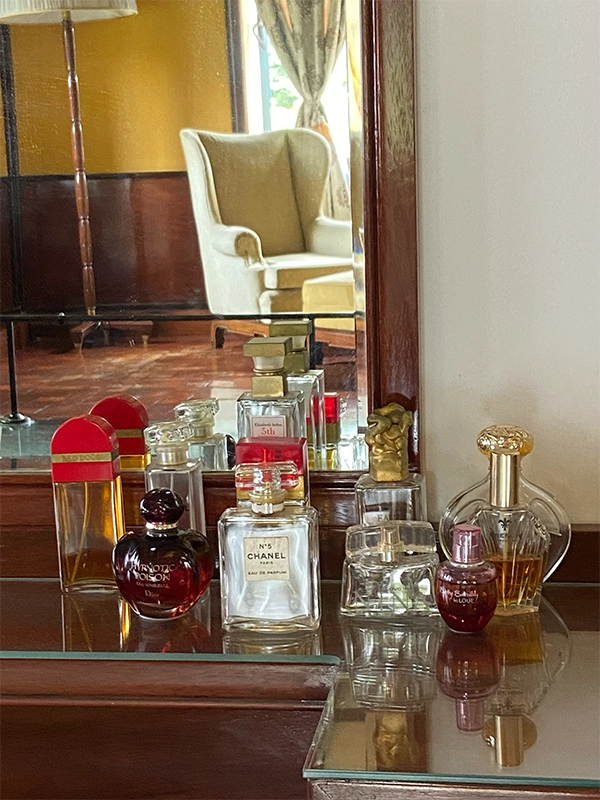

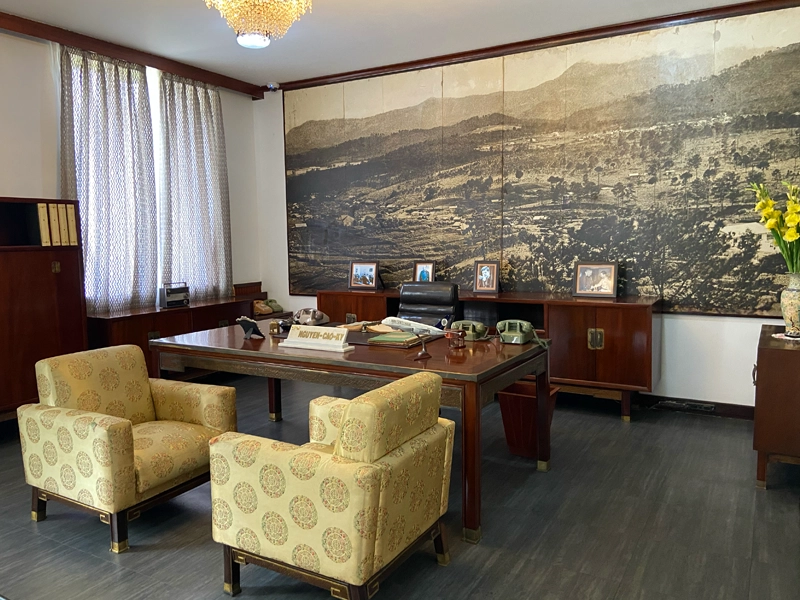
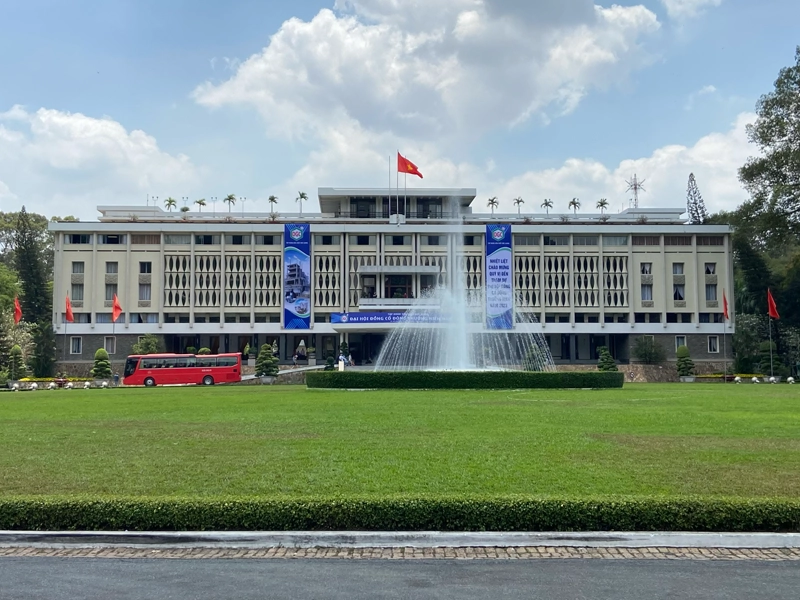
War Remnants Museum
While you can find a military museum in any bigger city in Vietnam the War Remnants Museum in Ho Chi Minh City is of a different caliber. The museum expands over several floors and buildings, as well as a fenced in courtyard with military equipment. Several permanent and temporary exhibitions range from the First Indochina War, up until the end of the Vietnam War in 1975.
Internationally the museum is considered controversially. As for my own opinion: everything government funded is by definition propaganda. That is no reason not to visit and expand your horizon and knowledge to then form your own opinion.

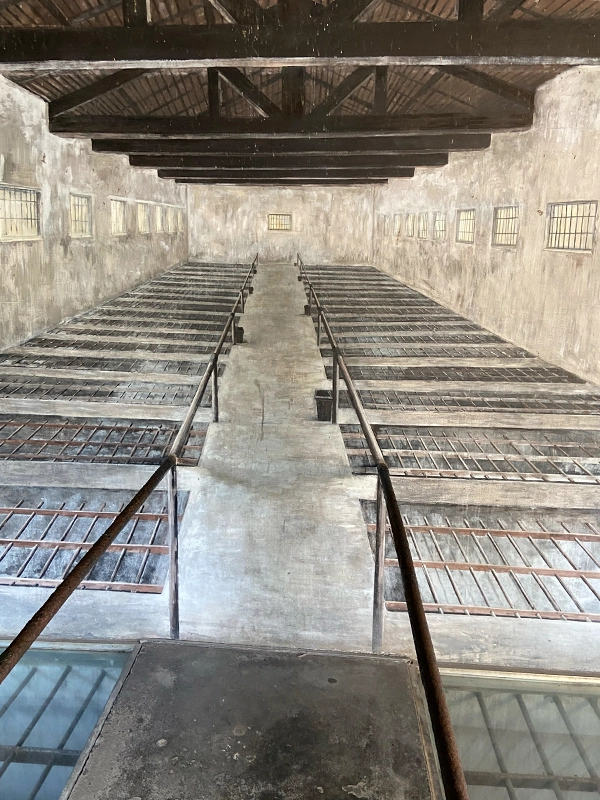
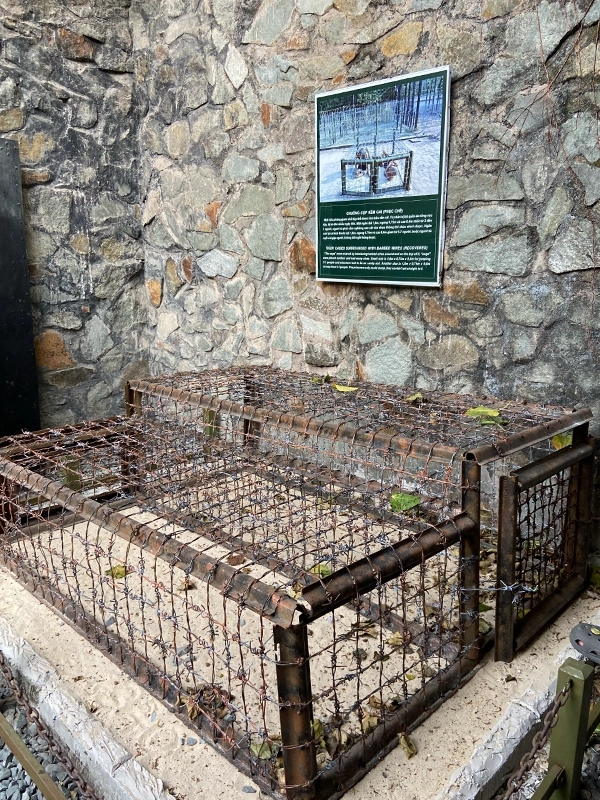
Ten Thousand Buddha Temple
The temple is four stories high, but hidden at the end of an alley so it is usually not frequented by tourists. The walls of the temple are covered in thousands of small Buddha statues, while two big ones reside in the middle. Behind them is a giant statue of a plant bud, surrounded by local folklore characters depicting good and evil.



Places to see for free in Ho Chi Minh City
Cafe Apartments – This nine-storey apartment building was built in the mid-1960s to house military and government personnel and it did for many years. The transformation into the building it is known as today, filled with small cafes and shops didn’t happen until the 2010s! Today only the stairways remind of us of the original purpose of the building.
Saigon Central Post Office – A remainder of the French colonial period of southern Vietnam / Indochina, this impressive old building is still in use as a post office today! A lot of the inside is covered by souvenirs and advertisements for tours and events, but the ceiling, floors and some walls still tell of the splendor and exclusivity it once had.
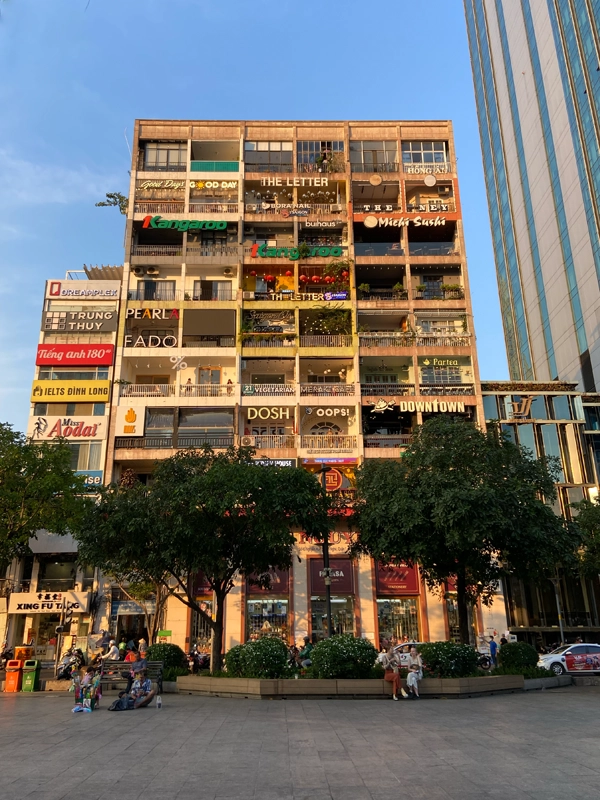
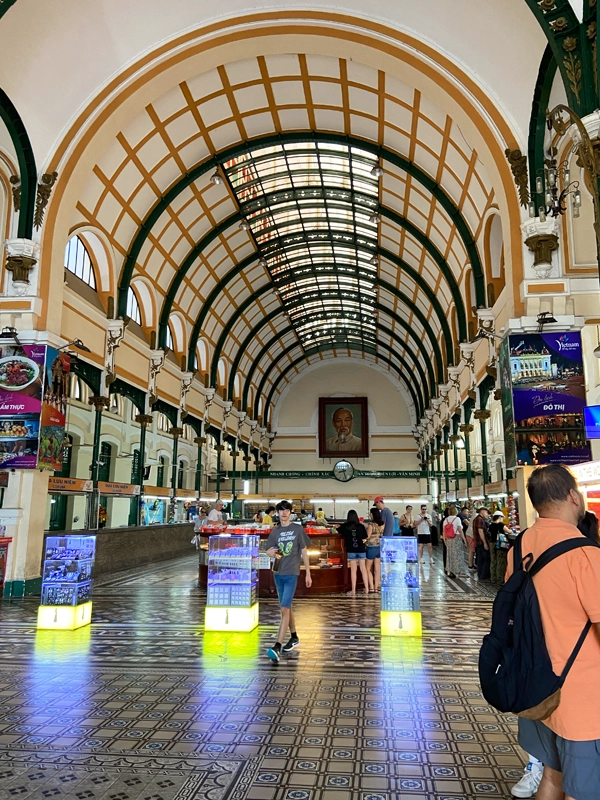
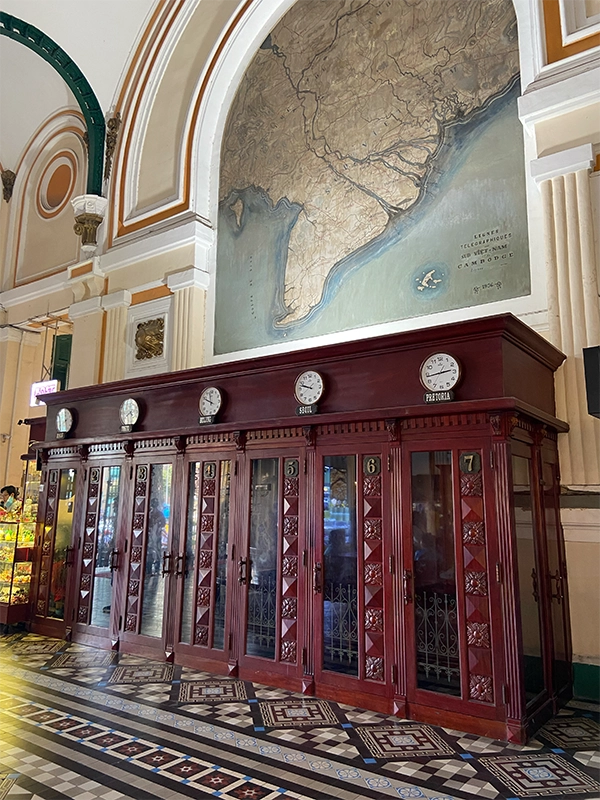
Notre Dame Cathedral of Saigon – Finished in 1880 (1895 when you include the towers) this cathedral was built to give French colonists an area of worship and spread the catholic belief within the colony. All building materials were imported from France: the outer bricks are from Toulouse, the original floor tiles from Marseille and the stained glass windows from Chartres! Nowadays a lot of it has been replaced (because, oh wonder, a European building style doesn’t last in tropic climate)
Tan Dinh Church – Also known as the pink church for obvious reasons is another catholic curch in Saigon worth a visit. The inside is also pink!
Cà Phê Đỗ Phủ – This cafe harbours a secret in its basement: During the Vietnam war it served as a hideout and shelter for the Viet Cong operating within South Vietnam’s capital. Communist sympathisers met here, weapons were stored, some of which you can still see today. Since it was a secret hideout the basement isn’t easy to access, you have to walk through a wardrobe and trap door!
Nguyen Thien Thuat apartment blocks – These apartment blocks, some of the oldest still standing in Saigon, were built in the late 1800s, during French occupation. Today they are as much of a marvel as they once were, but for different reasons. Every block is like it’s own little village, with families of five and more staying in two bedroom flats, living above shops, schools, cafes, workshops, businesses and markets. As with other old apartment blocks in the city, the future of this part of history is uncertain.
Ho Thi Ky Flower Market – This market, made up of several streets and alleys, as well as hundreds of flower shops and stands with thousands of flowers and flower arrangements is one of the oldest flower markets in Saigon. The streets are breathtakingly colourful and the smell of the flowers covers up the smell of the city for the most part.
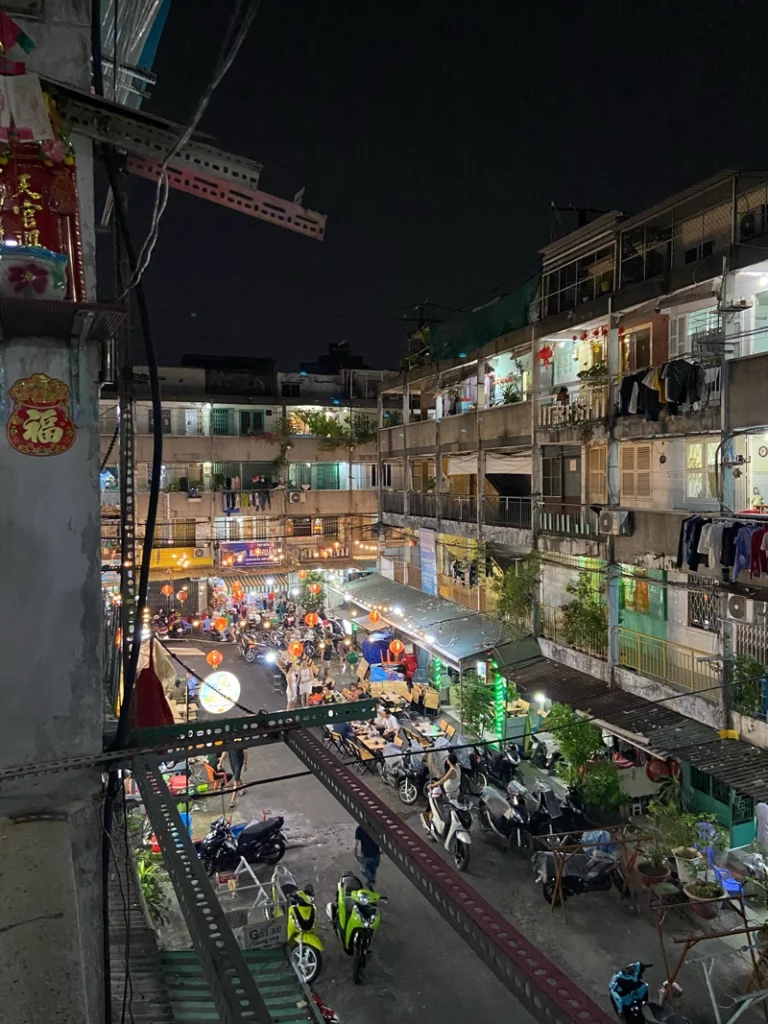
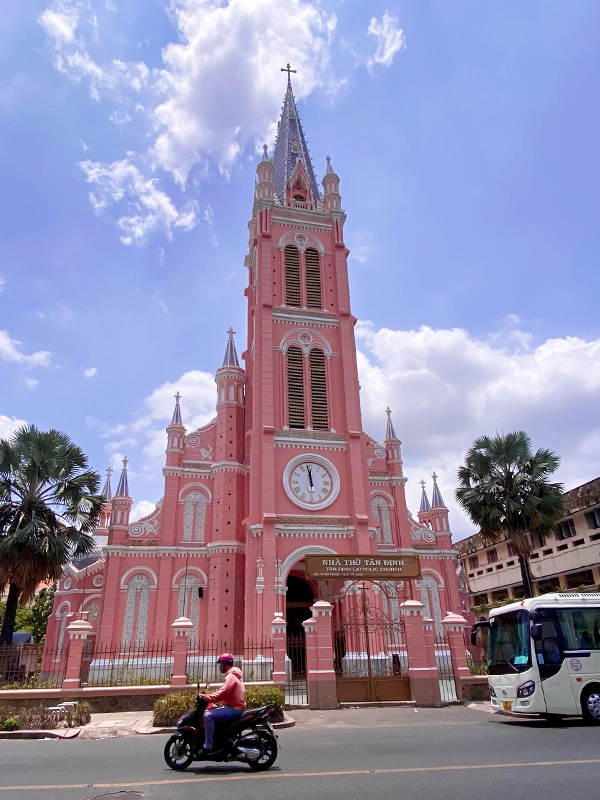
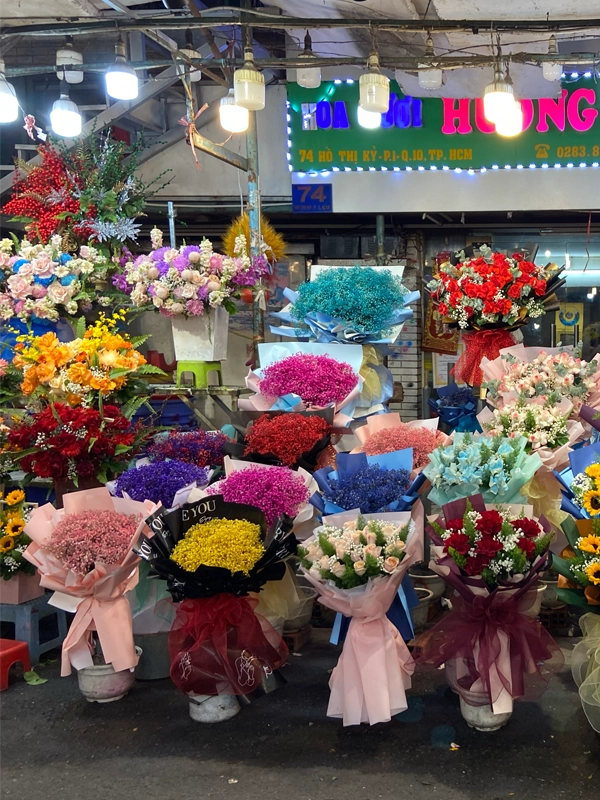
Củ Chi Tunnels
The Củ Chi Tunnels, originally built during the French occupation and later enlarged and used more extensively during the Vietnam war can be visited at two locations Ben Dinh and Ben Duoc. Both are relatively close to Saigon.
The two locations are very different from each other: Ben Dinh is the more touristy one, while the area around Ben Duoc is much larger and more extensive. I recommend visiting the tunnels with a local guide*, to get background knowledge and historical facts about the tunnels and their importance in the Vietnam war.
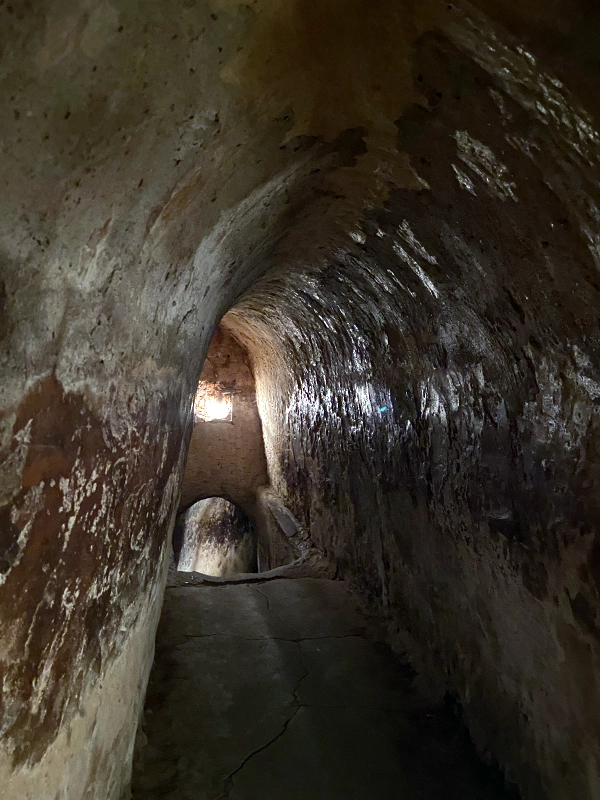
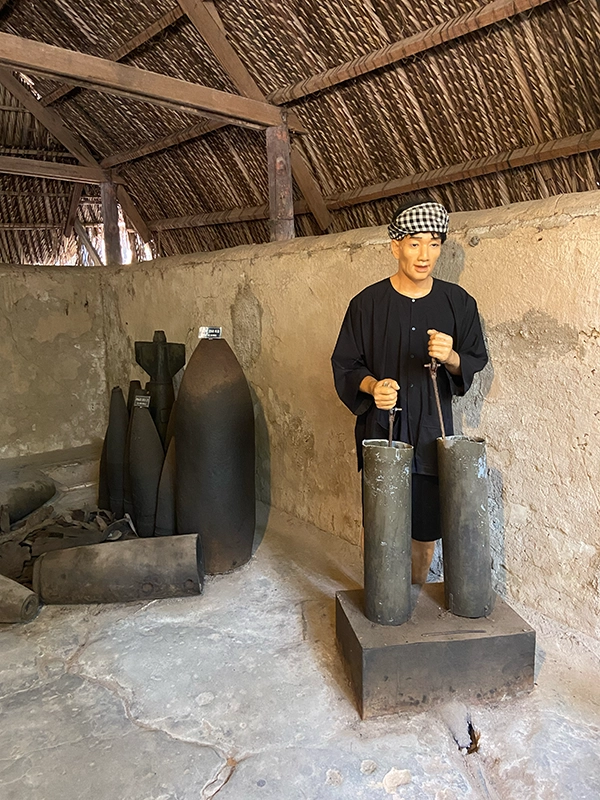
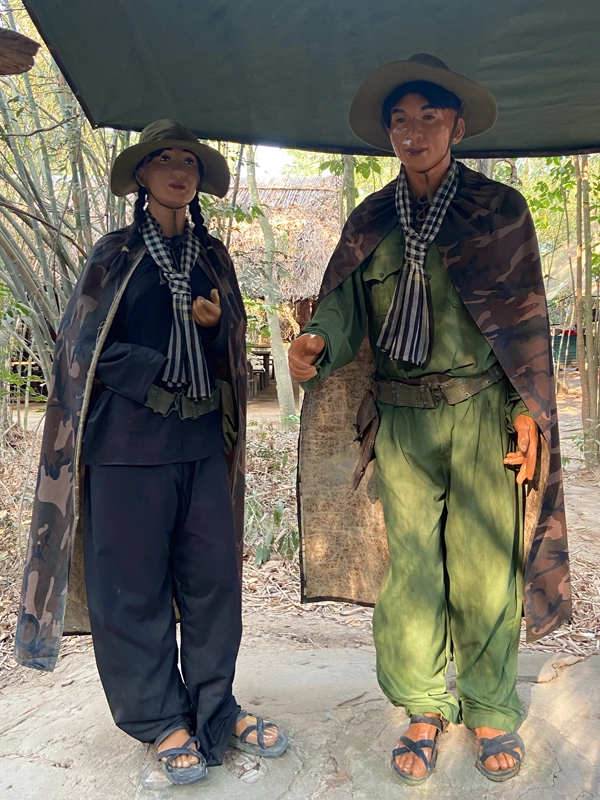
What to eat and drink in Ho Chi Minh City
I linked all of the mentioned foods in the map at the end of the blogpost.
Bò Né from a streetvendor in an alley at Hẻm 36 Trần Hưng Đạo. Bò Né translates to sizzling beef, which is exactly what it is. Beef, sausage, pate and an egg, served on a sizzling hot cast iron pan, served with banh mi bread, veggies and greens. This is my favourite south Vietnamese breakfast!
Bún thịt nướng, rice vermicelli, spring rolls, sliced veggies, peanut sauce, pig skin crackers around Binh Tay Market.
Sticky rice from a food stand at Phùng Hưng market. When I was there they were at the end of the market, on the corner to another street. You can choose your toppings. During a food tour I got to try all of them, my favourite ones were quail egg, pork floss and mung bean paste.
Dim Sum at Há Cảo Kiều Ký, also near Phùng Hưng market.

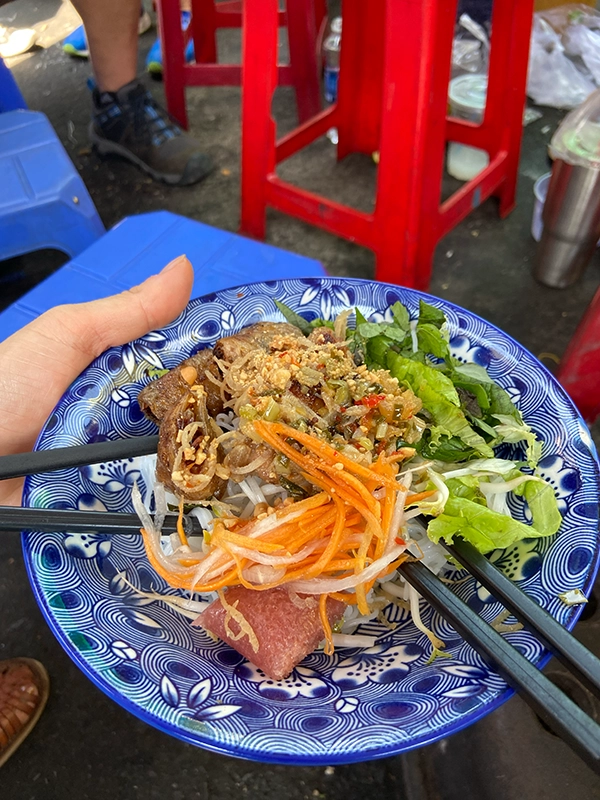

Grilled banana in sticky rice, with coconut cream “Chuối Nếp Nướng” from a streetvendor at 378 Võ Văn Tần. This was my favourite lunch. It has the perfect portion size, is located between many of the things you’ll want to see in Ho Chi Minh City and isn’t too heavy.
Of course you can also have many different Bánh Mì in Ho Chi Minh City. My favourite was the standard one at Bánh Mì Hồng Hoa (it is the more touristy one, but my stomach was feeling much better than after the one at Bánh Mì Huynh Hoa, which was the most gigantic Bánh Mì I’ve ever seen.). Close by is another street vendor selling the popular sandwich as well called Bánh Mì 37. Since it was close to my homestay I also stopped at Bánh mì Bùi Thị Xuân quite often, especially in the mornings before tours.
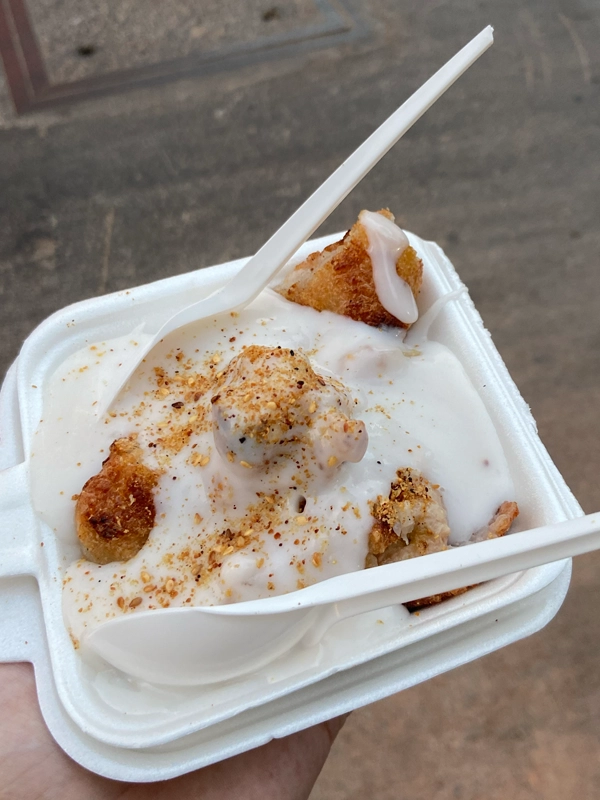
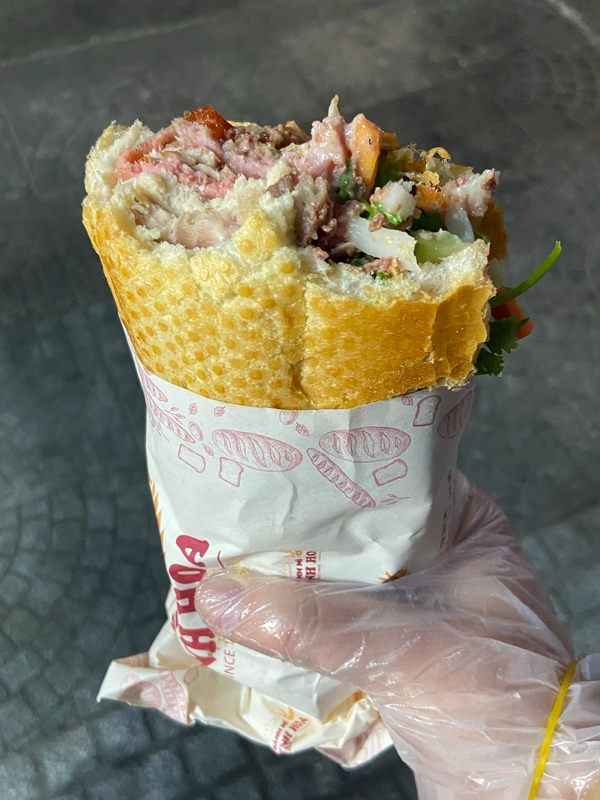
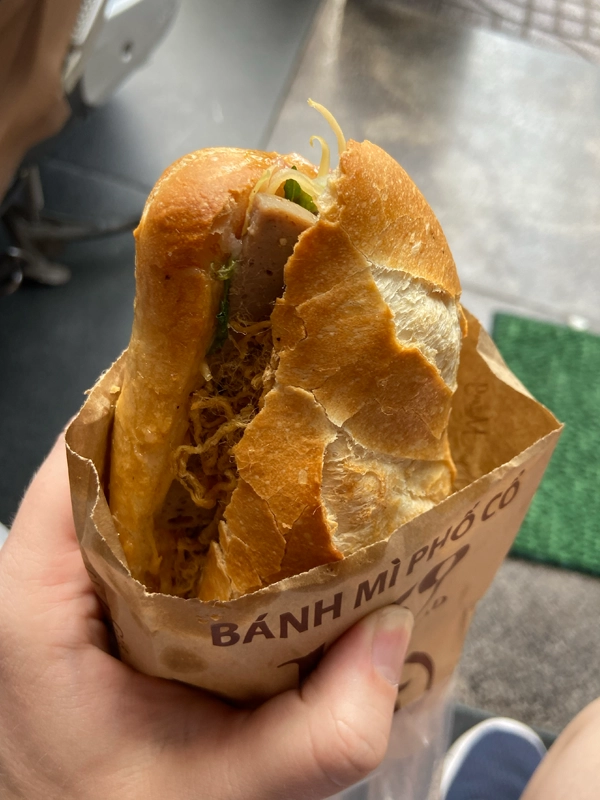
If you are vegan, or just want to try Vietnamese food, but vegan, you can eat at Vị Quê Kitchen. Their mushroom Bánh Mì was delicious and not more expensive than one from a streetvendor. The fried tofu had an amazing texture as well, but I couldn’t really get on board with the cilantro dipping sauce.
After meeting a family from Mumbai in the History Museum they recommended me a restaurant with authentic and absolutely amazing Indian food: Baba’s Kitchen Restaurant. Since it will be some time until I can get to India to eat there I went and wasn’t disappointed. You should definitely try their Paratha with your meal.
In the evening hours the area around Turtle Lake turns into a street vendor hotspot so you can try many different meals in one spot.
Bò Lá Lốt is one of my favourite street vendor foods, because you can almost always safely eat it. Minced beef is wrapped in Betel leaves and grilled. It’s good with rice vermicelli, herbs and rice paper, but honestly it’s also great on it’s own.

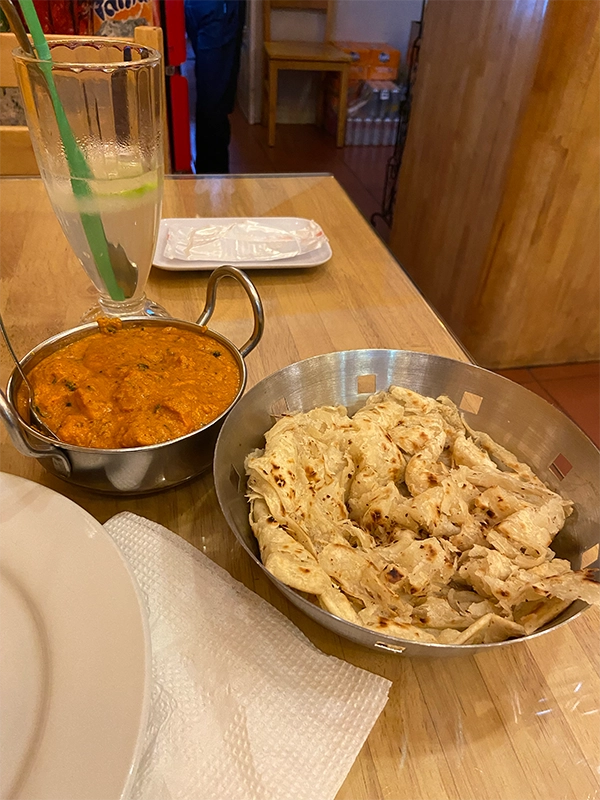
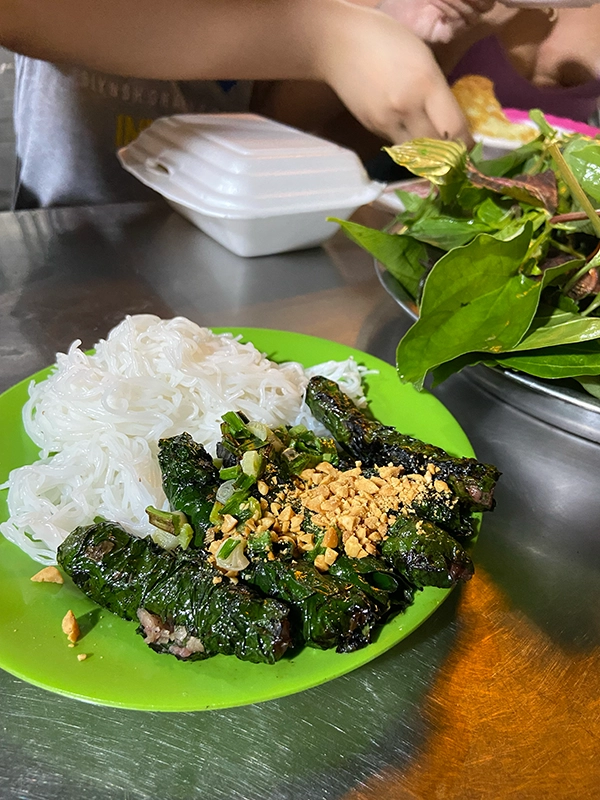
Sugarcane juice is a delicacy you can find all over Vietnam. Often with street vendors who freshly grate the sugarcane to extract the juice. It is usually served with ice and Kumquat, to cut through the sweetness. Despite being made from 100% sugarcane it is not too sweet.
The most delicious lemon ice tea at a cafe with immaculate vibes at S’mores Saigon. Also try the Oolong Latte and Creamy Drip Coffee.
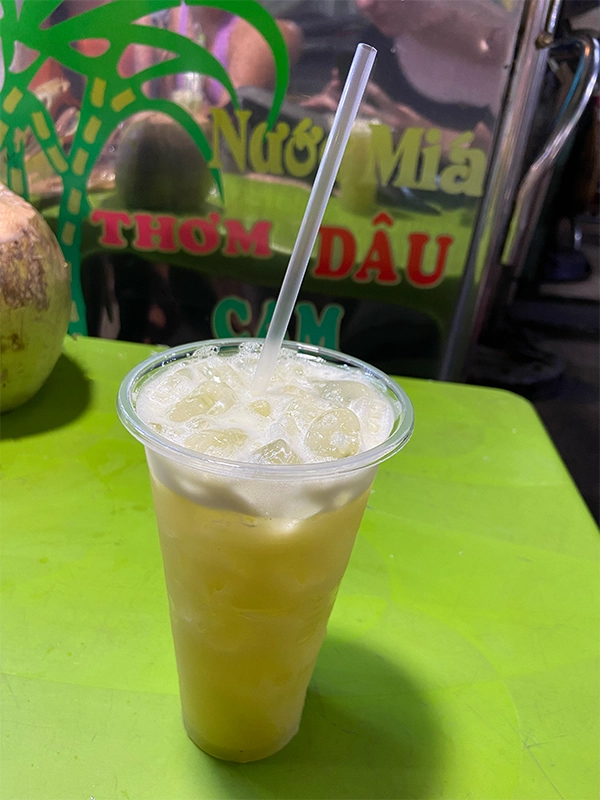
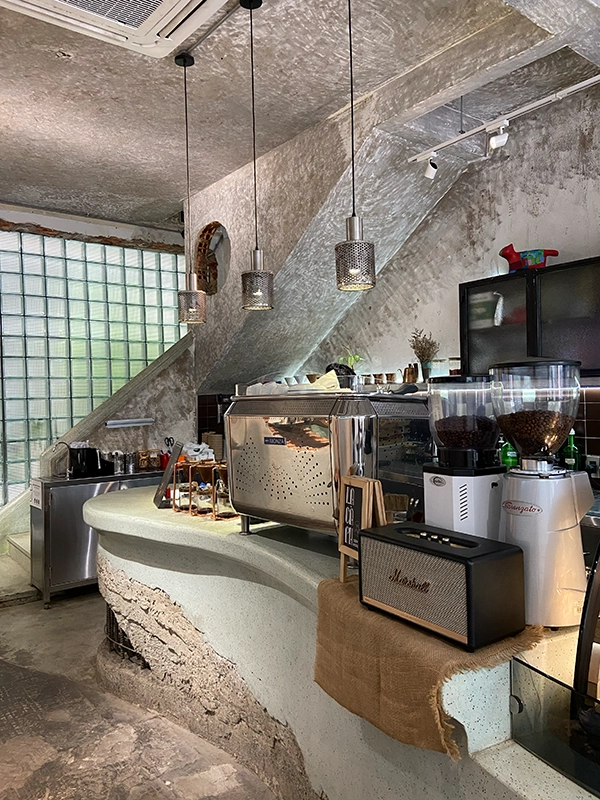
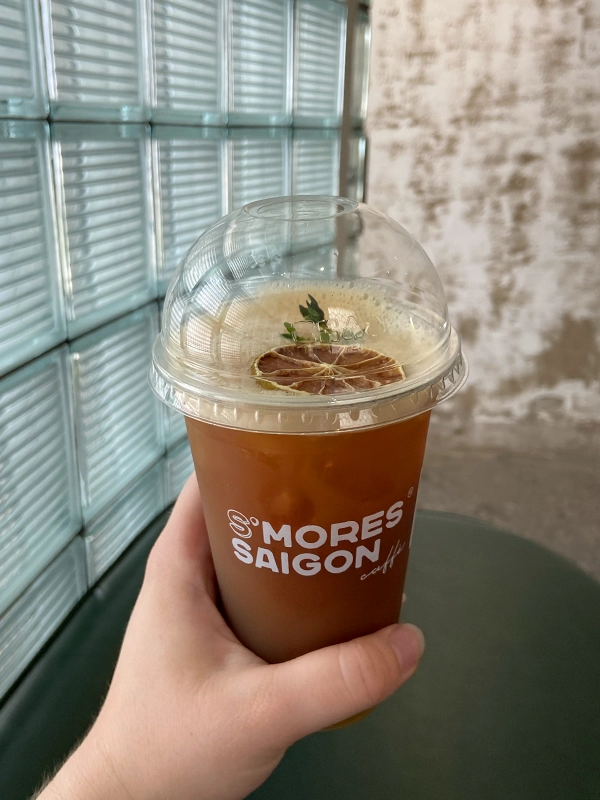
A wonderfully decorated cafe with delicious drinks is Tonkin Cottage Coffee and Eatery. This cafe in the middle of an apartment block is a quiet oasis within this bustling city.
While Cong Ca Phe can be found all over Vietnam there is another coffee chain in HCMC that really stood out to me: Cheese Coffee. I loved their Salt Coffe and Golden Boba Crepe Cake. This was my favourite Cheese Coffee location, it is great for people watching and editing your pictures while enjoying your coffee and cake. But there is another location that really stands out: Cheese Coffee – 15 Pasteur. The interior is beautifully decorated and very different from the other locations.
Boba, made to your specifications (ice level, sugar level, boba level) at KOI Thé. My favorite was the one close to the Cafe Apartments.
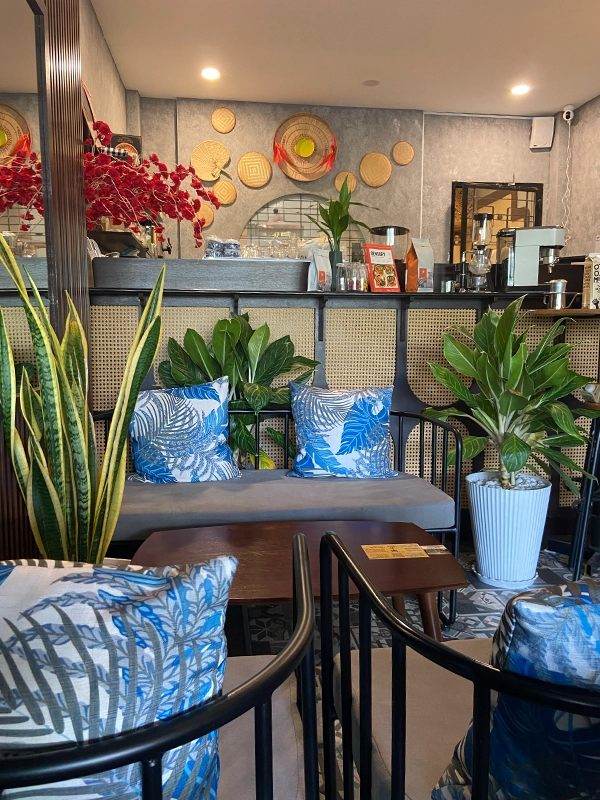
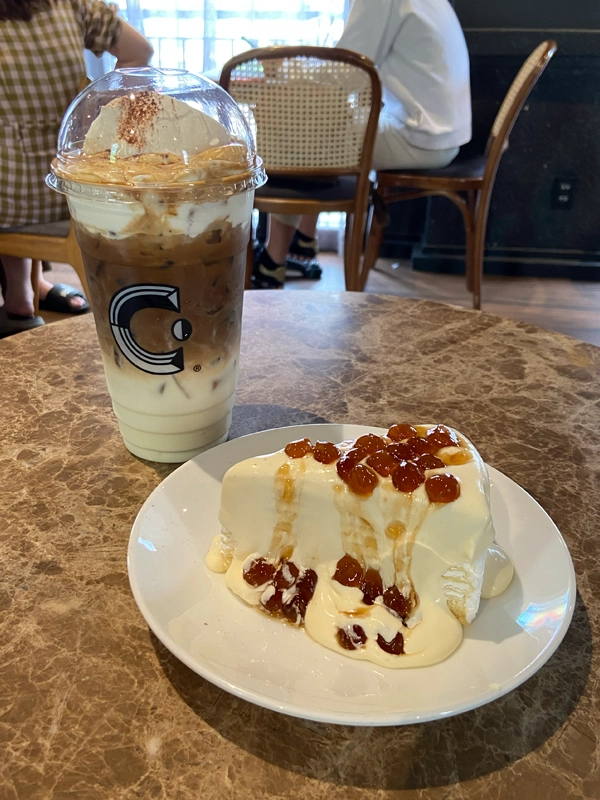
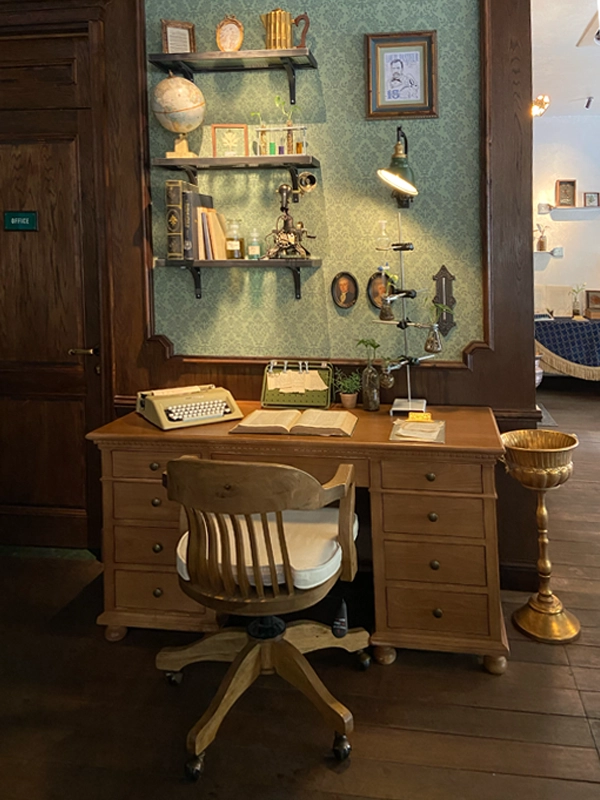
The best thing to do in a new city, in my opinion, is taking a food tour with a local guide (not a travel office tour) to taste the best food spots. I went on a Breakfast Food Tour in Saigon with Saigonhappytour. They introduced me to some of the foods shown above and showed me where to get my favourites in this huge city.
Map of my trip to Ho Chi Minh City
How to read the map: In the first layer light blue are museums and places of historical importance, dark blue are buildings of religious or cultural importance. In the second layer light green are restaurants, dark green are street vendors and orange are cafes. You can open the menu on the top left and choose the layers of the map.
You can save the map to your Google Maps for your trip to Ho Chi Minh City / Saigon by clicking here.


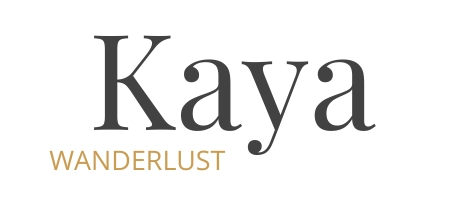

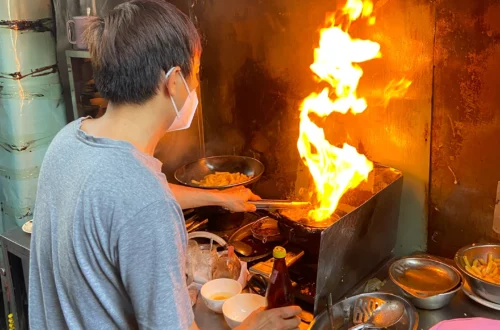

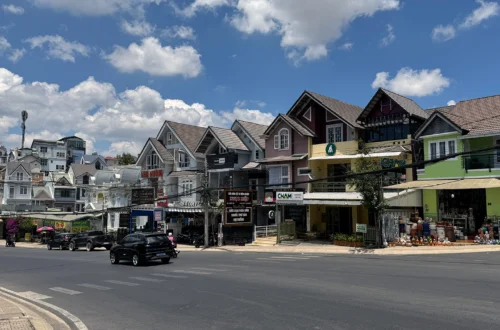
One Comment
Pingback: